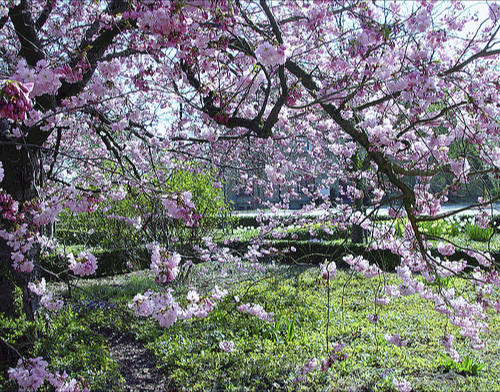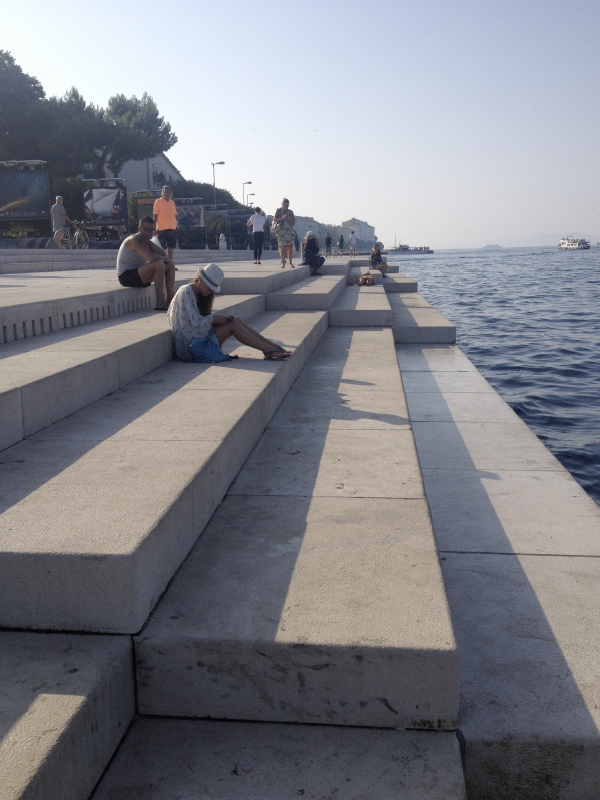Sensory Design: How Contemporary Projects Enhance Our Understanding of the Landscape
In recent years, landscape architecture has expanded beyond traditional projects to include land art projects, community-driven designs, and creative temporary uses for urban space. The range of these projects is vast and driven by human creativity, from Richard Serra's project 'Viewpoint' in Germany, to Rebar Art and Design Studio's 'bicycle parklet' located on Filbert and Fillmore in San Francisco. These are places that, first and foremost, are used by people, and they offer a unique opportunity to explore and test sensory design ideas.
Sensory landscape design is a framework used by designers like landscape architects, and others, that considers all human senses when designing a space in order to offer a deeper understanding of our surroundings and our role within a given landscape. This includes the five senses, as well as broader considerations such as temperature or elevation changes, the play between light and dark, or between space and enclosure, with a focus on the user's experience within the landscape.
Sensory design also offers potential as a medium to better engage local communities and individuals in the future of their environments. It has the power to evoke emotion and invite citizens to interact with the landscape rather than just moving through it.
Healing Gardens
Many of the early contemporary sensory landscape designs were healing gardens, often located on hospital grounds or other institutional spaces. Plantings in these gardens should vary in height, color, and scent. Edible plants and ornamental grasses, along with small shrubs often feature prominently. Overall designs are most effective when small, intimate spaces are created along the sides of winding paths. As benefits become more widely known, healing gardens are being designed for all types of places, not just hospitals. They can also be found in botanic gardens, universities, hotels, and even places of worship.
According to research completed by the Swedish University of Agricultural Sciences, the principles to consider for a healing garden include embodying a feeling of security, understanding user needs, building a variety of spaces for rest, activity, privacy and social interaction, and creating views where possible.
The Alnarp Rehabilitation Garden in Sweden highlights many of these principles. Opened in 2002, the garden offers a natural place to recover from stress-related diseases. The garden is divided into several different areas, each with themes around nature or cultivation, which allows for both active and passive uses. Colour, fragrance, and tactile elements provide opportunities for user interaction.
Sensory design is effective precisely because evolution connects us deeply with nature. Each project must, therefore, be deep rooted to the unique context of the chosen site. This highlights a key lesson we can take from sensory design: understanding site context and conditions to inform design decisions, whether that is plant selection or the details of pavement and seating.
Sensory Gardens
Another excellent example of a sensory design is the Lerner Garden of the Five Senses, opened in 2009 as part of the Coastal Maine Botanical Gardens.
Coastal Maine Botanical Gardens. Image credit: Wikimedia Commons
This garden is cleverly designed with several nooks along a winding path, each dedicated to one of the senses. There is an intricate labyrinth as part of the 'touch area,' which encourages you to experience the paving stones with your bare feet. Along with a strategic selection of plants to provide for the sense of touch, sight, and smell, water is a primary auditory device. Another unique auditory element is stones with holes placed in a way that allows a new experience of hearing your surroundings. Some elements of this sensory garden design are already making their way into typical landscape projects, including tactile maps and braille signage.
Contemporary Landscape Examples
Last year, students from Estonia built large wooden 'megaphones' deep in the forest in an attempt to highlight the value of the forest and to change the user's experience of the space. Three wooden structures are placed at angles, which together create a surreal audio experience for those standing in the centre. This shows us that simple ideas and temporary structures can have a profound effect on a space.
Megaphone project in Estonia. Image credit: upperplayground Flickr Creative Commons
In Zadar, Croatia, architect Nikola Basic created a 70 metre set of stairs along the seawall. Below the stairs is a set of pipes, which act as an organ, creating seven chords of five tones. Sound is created as the continuous ever-changing sea waves push air through the pipes. This unique public art piece creates a dramatic and eerie auditory atmosphere. An elegant light display also captivates visitors at night, providing an encompassing audio-visual show. This is another great example of nature inspired ideas that allow us to experience the landscape in a whole new way.
In the developing world, rising populations in metropolitan areas have led to a demand in redeveloping disused or unloved spaces as a means to escape the hustle and bustle of inner city life. Sensory design has become an integral part of those positive changes.
As cities expand and develop, the ratio of concrete to green spaces has become alarmingly top-heavy and thus, any regeneration of neglected spaces into green oases is becoming more commonplace – and more critical.
Inner city life is notorious for making people feel disconnected from nature and thus, any small yet beautifully formed sensory spaces can help to alleviate the negative consequences of life in the big city through tapping into our core senses; whether touch, smell, sight, or sound. Sensory design helps to give us back the connection with nature we crave and deliver it in an original and energizing way.
Projects such as these can both inspire and teach us as we search for resilience and sustainability in landscape architecture. If done well, they can have an impression long after a visitor leaves a place, providing a new way of looking and experiencing the landscape around us. This in turn allows for a deeper understanding of our surroundings and our role in a reinvented landscape. It is clear just how important it is to consider how urban landscaping shapes our cities and influences our senses, and the extent in which they can cause us stress or be fulfilling and restorative to both body and mind.
Julian Bore has managed the provision of professional landscape architecture, ecology and arboriculture services to private and public sector clients in the United Kingdom for over two decades.




